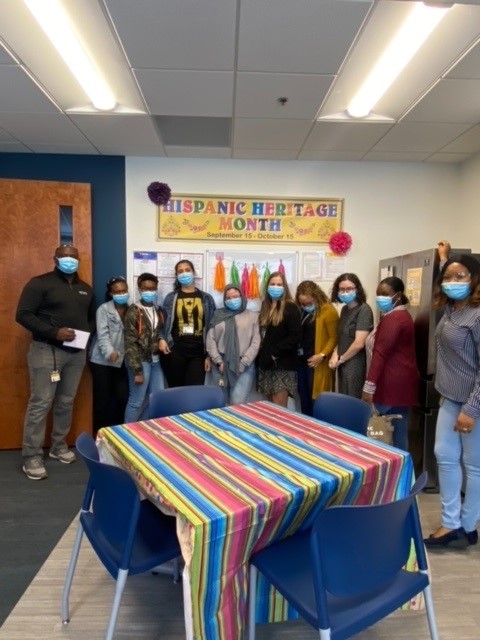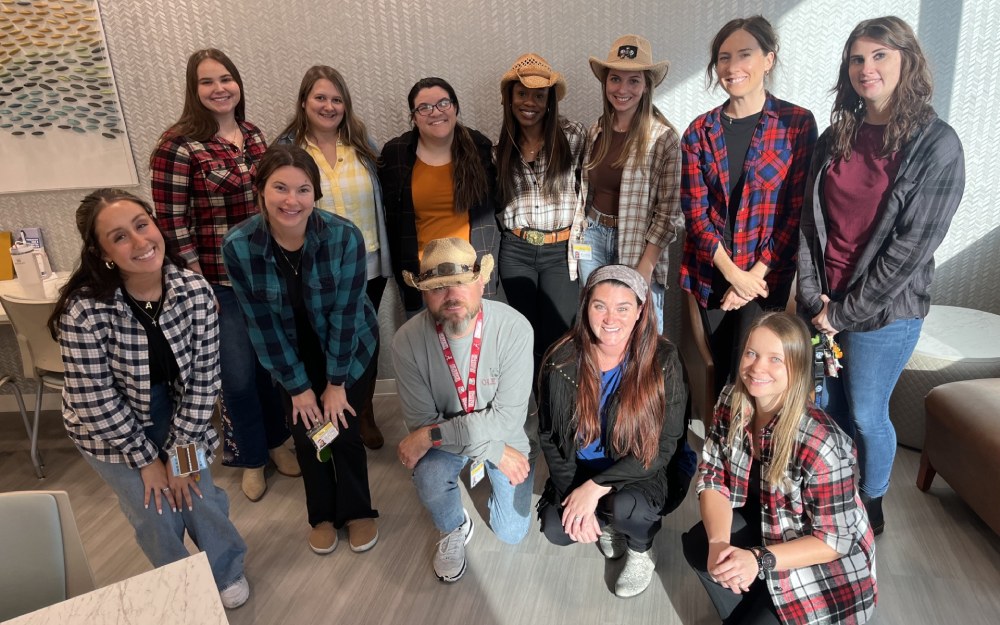
Rogers celebrates National Hispanic Heritage Month
10/19/21 03:10:pm
The first, which took place on September 22, featured a welcome by Karen Nelson, director of Equity, Diversity, and Inclusion. She explained that the month celebrates the histories, cultures, and contributions of American citizens whose ancestry originates in Spain, Mexico, the Caribbean, and Central and South America.
September 15 marks the anniversary of independence for five Latin American countries (Costa Rica, El Salvador, Guatemala, Honduras, and Nicaragua), while Mexico and Chile recognize their independence days on September 16 and 18, respectively.
The speaker in the first video event was Dr. Enrique E. Figueroa with an introduction by Lauren Mascari, PhD, a post-doctoral fellow in Brown Deer.
Dr. Figueroa is a former Cornell University professor and presidential appointee during the second Clinton administration who served as the director of the Roberto Hernández Center at University of Wisconsin-Milwaukee, where he established a Latino nonprofit leadership program. His latest project is a donor advised fund at the Greater Milwaukee Foundation that works to better understand the practice of Chicano arts.
“One of the important things for Rogers employees to know is to have a good sense of the Hispanic population,” said Dr. Figueroa. He shared that the Hispanic population made up 18.3% of the total U.S. population in 2019, with approximately 60,095,000 people. The current estimated population is about 63 million.
Over the last decade, Dr. Figueroa said Hispanics and Latinos accounted for a little over half of the total growth of the U.S. population.
“What does this mean?” he asked. “Even though the population is so large, we do not see that reflected in pop culture. We have to ask ourselves why is that.”
Other highlights from Dr. Figueroa’s presentation included:
- According to a recent national survey from the Pew Hispanic Center, about 50% of Hispanics in the U.S. identify themselves based on country of origin; 25% identify as Hispanic or Latino; and 25% identify as American. “So, we need to be cognizant of those self-defining identities because that’s what they consider themselves to be,” he said.
- Another Pew Hispanic Center survey found that 20 percent of Latinos have heard of the term “Latinx,” and only 3% identify as it. “I want to caution you because the national media has promoted Latinx, yet very few identify themselves as such,” he said.
- He predicts the Latino and Hispanic population will be critical in a number of races next year in the midterm elections. While roughly half of all Latinos in the U.S. historically resided in Texas and California, that number has dropped to 40%.
- We are seeing a significant increase in income, wealth, and education growth in Latinos.
“We are a growing population and a population that will commend more interest,” Dr. Figueroa concluded.
In the second video event, which was held on September 29, viewers learned about “Gender Fluidity in Indigenous Communities.” The speaker was Sandra Zapata, the clinical director of the LGBT Community Center in Milwaukee, who was introduced by Diana Alvarado, a therapist in Skokie.
“Not all indigenous groups celebrated gender fluidity, but it’s largely documented that a lot of them did recognize more than two genders prior to colonization,” said Sandra, who identifies as a nonbinary, queer, and reconnecting indigenous person from Mexico.
“One of the very exciting movements currently take place in our countries and continent is the resurgence of people seeking to decolonize their way of life and seeking to reconnect with their indigenous roots,” they continued. “Unfortunately, many of our traditions and concepts have been lost or poorly translated, but nonetheless, as we embark on a process of relearning our cultures, we move bravely toward reexamining concepts brought to us by colonization.”
According to Sandra, discussing gender fluidity concepts in indigenous communities can help us to explore deeply seated issues with our patients who may have indigenous roots. They said many of our indigenous languages exist without gender or sexuality concepts considered as wrong or sinful.
“The concepts of natural behavior being wrong were introduced largely by early European colonizers who did not recognize the way of life of our indigenous ancestors as valid,” they said.
The terms of Hispanic and Latino are also problematic, Sandra states, as they are categories that encapsulate many different cultures under one umbrella without regard for their experience or specific culture.
“People in groups don’t exist in a vacuum,” they said. “There is no universal experience for all Hispanic and Latino people, and it’s very important to get to know people individually and not to make assumptions about their needs.”
Sandra’s hope is that this small conversation on gender fluidity and how it interacts or exists in indigenous communities will be helpful in better connecting with patients.
“If you have any clients harmed by negative stereotypes imposed by ideas deeply rooted in colonization, it may be helpful to explore concepts that may help them see a different and more affirming concept of themselves,” they said. “Perhaps even learning about different concepts in your own culture, if not indigenous, may be helpful in better understanding different gender identities and sexualities.”
In the third, and final, video, Maria Couyutas, a bilingual patient access specialist and intake screener for the Regional Division, introduced Salsabrositas, an award-winning Latin dance team based in Milwaukee. Consisting of 20 female members between the ages of 5 and 17, the group has performed throughout the Midwest.
Salsabrositas showcased the salsa and bachata, two of the most popular Latin dances, with Maria providing historical details.
The salsa is comprised of Cuban, Spanish, African, French, and Haitian elements, she said. It gripped the Cuban population toward the end of the 19th century and became well-known in other Central American regions in the beginning of the 20th century.
The bachata, on the other hand, was influenced by a variety of Latin American guitar styles and by Afro-Cuban music and dance.

Rogers’ final celebration for National Hispanic Heritage Month took place on October 15 when employees were invited to wear Hispanic Heritage colors of their choice with jeans and in accordance with the dress code.
You can view the full recordings from National Hispanic Heritage Month above or by visiting the event page on Rogers Connect. Please visit the Equity, Diversity, and Inclusion page on Rogers Connect for more information.





